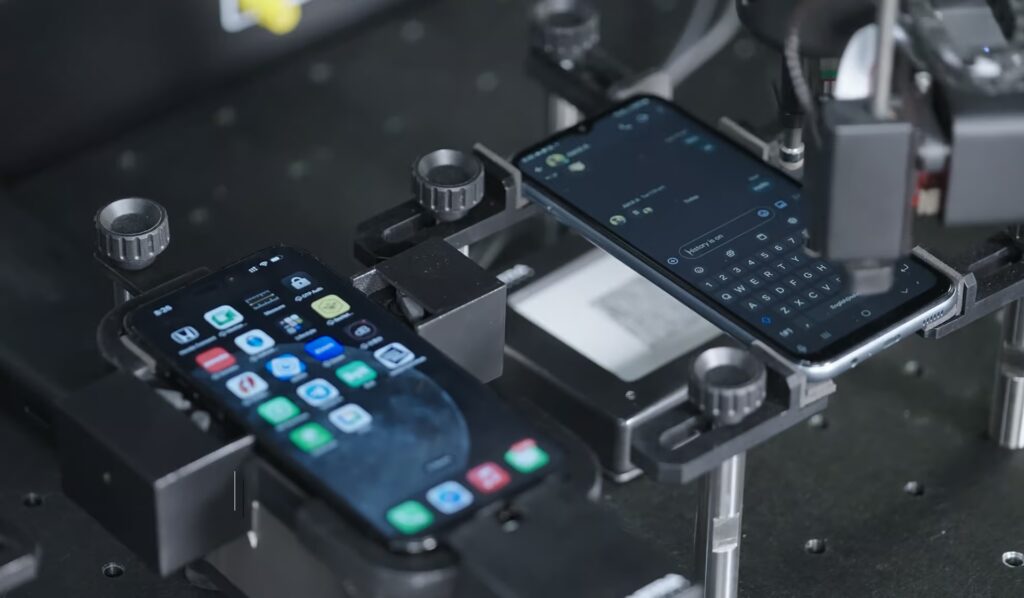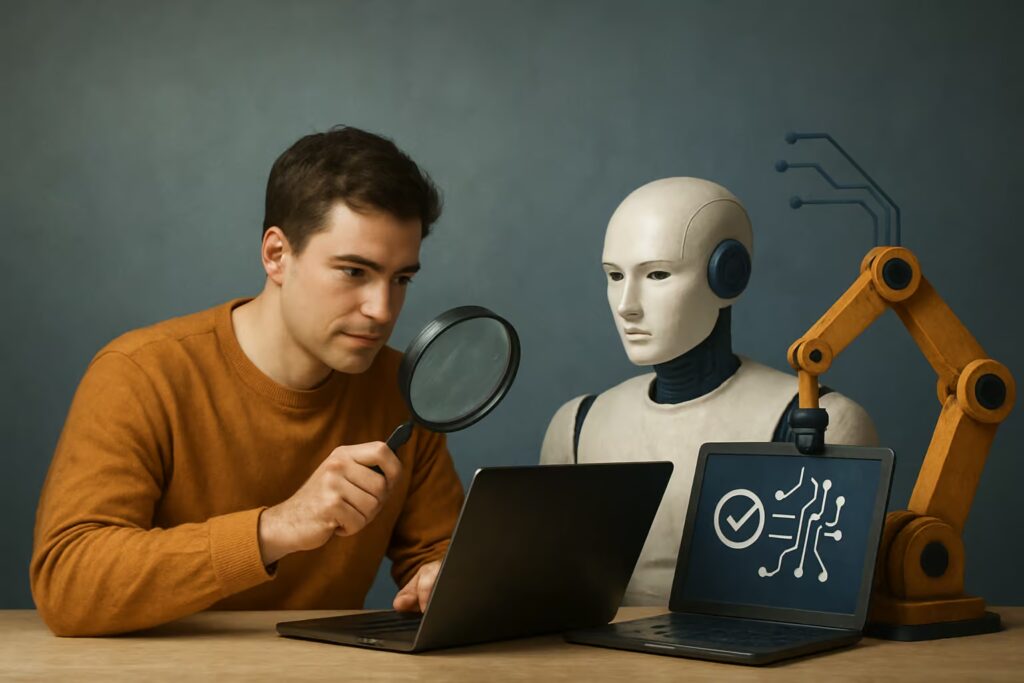Table of Contents
Let’s address the concern many QA professionals quietly carry: does AI replace testers? With the rapid adoption of AI-powered testing and robotic testing automation, this fear is understandable.
People see smart tools and assume human roles are at risk. But here’s the reality: AI in software testing isn’t here to take your place.
In fact, according to the 2024 Stack Overflow Developer Survey, 70% of professional developers do not perceive AI as a threat to their jobs. This reflects a shift in mindset; AI is increasingly seen as a collaborator, not a competitor.
In this blog, we’ll explore how test automation with AI actually strengthens your role. Let’s start!
What AI and Robotic Testing Really Do
SGBI’s intelligent testing ecosystem combines Quaco Studio AI with robotic testing units to assist modern QA teams. These tools are not designed to replace testers but to automate tasks that consume valuable time and energy.
To clarify, AI’s role in software testing is to handle high-volume, repetitive test execution while improving speed and consistency.
- Quaco Studio converts existing test cases into robotic executions. There is no need to rebuild your test infrastructure.
- It also creates new test cases from plain-language input. This enables broader team participation, including non-technical stakeholders.
These automated software testing tools enhance efficiency, reduce manual strain, and support better strategic oversight. Testers remain in control, guiding the process, interpreting results, and driving quality forward.
Manual Testing vs AI and Robotic Testing
To understand AI’s value in software testing, it’s essential to compare it directly with manual approaches.


This table outlines key differences across critical testing factors:
| Factor | Manual Testing | AI and Robotic Testing |
| Speed | Human-paced and often restricted by tester availability and resource constraints | Executes test suites up to 10 times faster, including unattended overnight runs |
| Coverage | Full coverage is possible but rarely achieved due to time and budget limitations. | Approaches full coverage by automating repeated scenarios and uncovering edge cases |
| Fatigue | Repetitive tasks cause cognitive fatigue, increasing errors and lowering accuracy. | Operates continuously with no drop in performance or attention to detail |
| Creativity and Strategy | Human testers bring logic, intuition, and contextual awareness | AI handles repetitive execution so testers can focus on creative test design and risk analysis |
| Setup Time | Requires detailed scripting and ongoing manual updates | Uses existing test assets and creates new cases from plain language input |
| Cost Over Time | The cost rises with team expansion and increasing test volume | Higher initial investment, but long-term operational costs drop significantly |
| Tester Role | Primarily focused on running and documenting tests | Shifted to strategy, AI training, exploratory testing, and quality oversight |
How AI and Robotics Redefine Tester Roles
The introduction of AI in software testing and robotic testing automation is reshaping the responsibilities of modern testers.
Instead of executing repetitive tasks, your role now focuses on guiding strategy, defining scenarios, and ensuring quality from a broader perspective. These tools are not meant to replace human capability. They exist to support faster execution so your time can be spent on more valuable decision-making.

You are no longer expected to write every script or monitor every run. Instead, you train the AI with clean inputs, review its suggestions, and refine its performance over time. This collaboration allows you to direct energy toward problem-solving, risk analysis, exploratory testing, and identifying gaps the system cannot anticipate.
One engineering lead said it best during a recent pilot.
“Once we realized our test coverage doubled without doubling effort, the team finally saw the value.”
That is the true benefit of AI-powered testing. It clears space for real thinking and gives your role a more significant impact.

From Job Loss to Job Liberation
The widespread fear that AI in software testing will eliminate QA roles is deeply misplaced. In reality, AI-powered systems are removing bottlenecks, not people.
The shift toward robotic testing automation places greater emphasis on skills like test planning, strategic thinking, and cross-functional collaboration.
With SGBI’s automated framework and Quaco Studio, testers are not being sidelined. They are being equipped to lead. These tools handle execution so that you can focus on complex problems, design smarter tests, and improve coverage.
Reach out to us today for a demo or consultation now!




